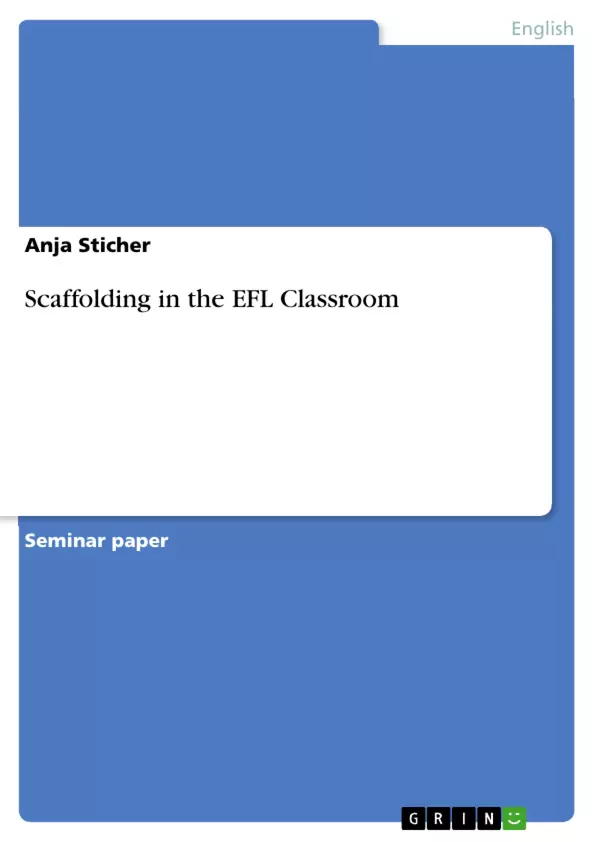In this paper I will deal with the topic of “Scaffolding in the EFL classroom.” Scaffolding plays a crucial role in the classroom and can help to contribute to good teaching. Nevertheless, most teachers are neither aware of the huge benefits of scaffolded instruction, nor do they know anything about the concept of “scaffolding” or the strategies related to it. Even if they sometimes happen to make use of scaffolding strategies, they also often miss the opportunity to apply them when it might have been appropriate to do so. Hence, the aim of this paper is to provide theoretical as well as practical information on scaffolding and to show that and how it is used in class.
Inhaltsverzeichnis (Table of Contents)
- Introduction
- What is scaffolding?
- Scaffolding in theory
- Scaffolding in practice
- Presentation and analysis of the data
- Discussion of findings
- Conclusion
- References
Zielsetzung und Themenschwerpunkte (Objectives and Key Themes)
This paper aims to provide a comprehensive understanding of the concept of "scaffolding" in the EFL classroom, exploring its theoretical foundations and practical applications. It aims to demonstrate the benefits of scaffolded instruction and equip teachers with the knowledge and strategies necessary to effectively implement scaffolding in their classrooms.
- Theoretical underpinnings of scaffolding
- Practical applications of scaffolding in the EFL classroom
- Key features and strategies of effective scaffolding
- Analysis of real-world classroom examples
- Impact of scaffolding on student learning and development
Zusammenfassung der Kapitel (Chapter Summaries)
- Introduction: This chapter introduces the topic of scaffolding in the EFL classroom, highlighting the importance of scaffolded instruction and its role in improving teaching practices. It outlines the paper's structure and the key areas that will be explored.
- What is scaffolding?: This chapter provides a comprehensive definition of scaffolding, drawing upon theoretical frameworks and real-world examples. It examines the concept of scaffolding in both its theoretical and practical contexts, highlighting its significance in supporting student learning.
- Scaffolding in theory: This section delves into the theoretical foundations of scaffolding, tracing its roots to Vygotsky's sociocultural theory and the concept of the "zone of proximal development" (ZPD). It explores the social and cultural aspects of learning and the role of scaffolding in bridging the gap between what learners can do independently and what they can achieve with support.
- Scaffolding in practice: This section focuses on the practical implementation of scaffolding in the classroom, examining various strategies and techniques that teachers can utilize to support student learning. It provides insights into how scaffolding can be effectively integrated into different teaching approaches and contexts.
- Presentation and analysis of the data: This chapter presents and analyzes data collected from real-world classroom observations and interactions. It provides specific examples of scaffolding strategies in action, illustrating how these strategies contribute to student learning and development.
- Discussion of findings: This chapter discusses the findings from the data analysis, focusing on the effectiveness of scaffolding in the EFL classroom. It explores the impact of scaffolding on student learning outcomes, motivation, and overall classroom dynamics.
Schlüsselwörter (Keywords)
Scaffolding, EFL, classroom, instruction, Vygotsky, zone of proximal development (ZPD), sociocultural theory, learning, teaching, strategies, support, interaction, student learning, development, analysis, findings, impact, effectiveness.
- Quote paper
- Anja Sticher (Author), 2009, Scaffolding in the EFL Classroom, Munich, GRIN Verlag, https://www.grin.com/document/146068



